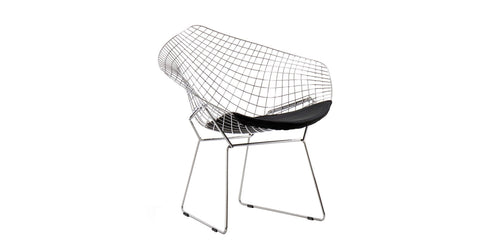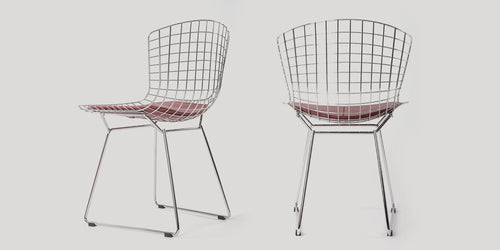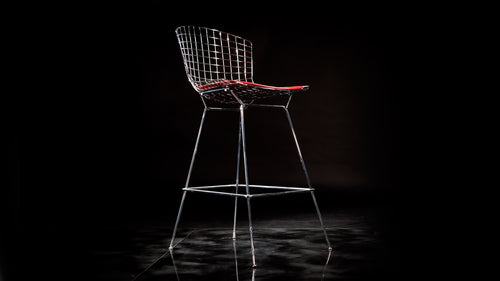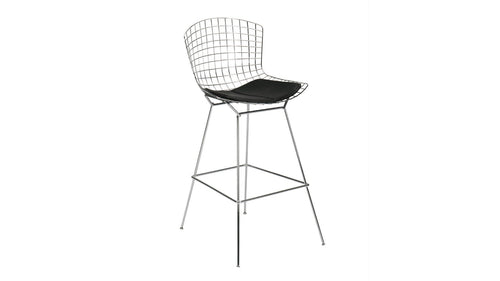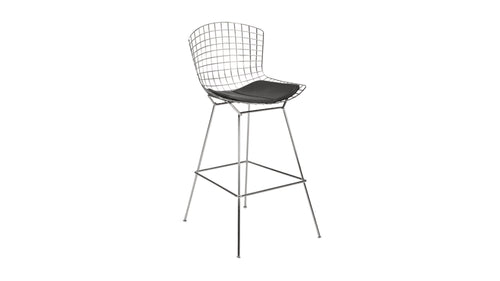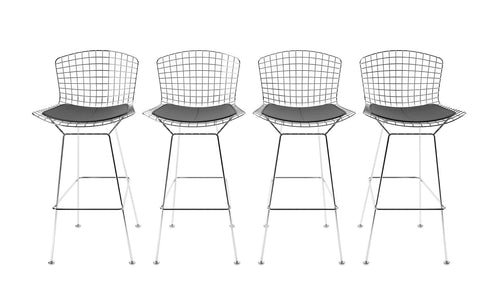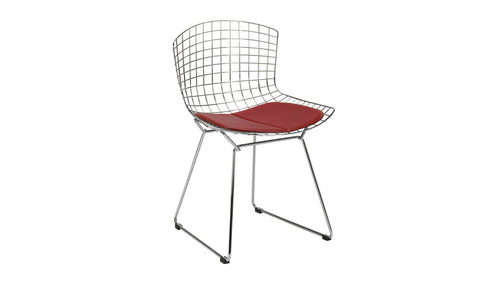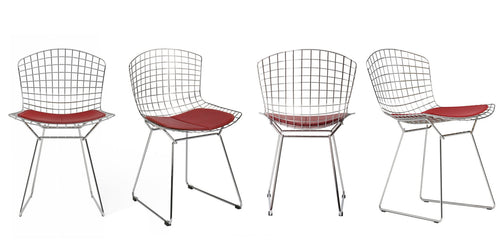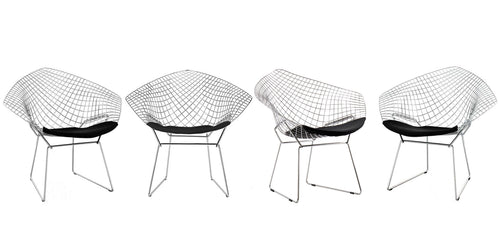Harry Bertoia
H. Bertoia
(1918-1978)
Assembling it had been wonderful, but I decided that one seat was not enough. Born in Italy, Bertoia moved to the United States with his family when he was fifteen years old. There he studied painting and sculpture. His interests were extensive and varied: initially a painter, he worked primarily as a sculptor, then as a jewellery disigner, teacher of working materials’ techniques and finally furniture designer. His partnerships with Eero Saarinen and Charles and Ray Eames also proved decisive in his career. His chairs built in steel rods (1952) were an instant success and highly sought after the world over. They fully express Bertoia’s philosophy, and his approach to creating objects. First and foremost, they are comfortable, satisfying the fundamental requirements of functionality. Yet already at first glance one realizes that they are actually sculptures, since in Bertoia’s eyes a sculpture or a chair are conceptually similar elements. And finally, these creations are a testament to the extremely refined manual technique of working metal, of which Bertoia was a master.
Assembling it had been wonderful, but I decided that one seat was not enough. Born in Italy, Bertoia moved to the United States with his family when he was fifteen years old. There he studied painting and sculpture. His interests were extensive and varied: initially a painter, he worked primarily as a sculptor, then as a jewellery disigner, teacher of working materials’ techniques and finally furniture designer. His partnerships with Eero Saarinen and Charles and Ray Eames also proved decisive in his career. His chairs built in steel rods (1952) were an instant success and highly sought after the world over. They fully express Bertoia’s philosophy, and his approach to creating objects. First and foremost, they are comfortable, satisfying the fundamental requirements of functionality. Yet already at first glance one realizes that they are actually sculptures, since in Bertoia’s eyes a sculpture or a chair are conceptually similar elements. And finally, these creations are a testament to the extremely refined manual technique of working metal, of which Bertoia was a master.


